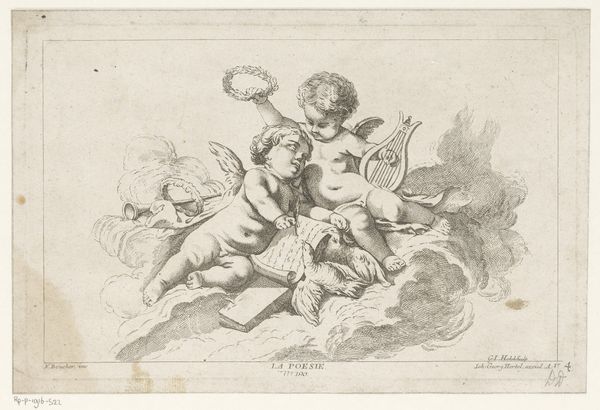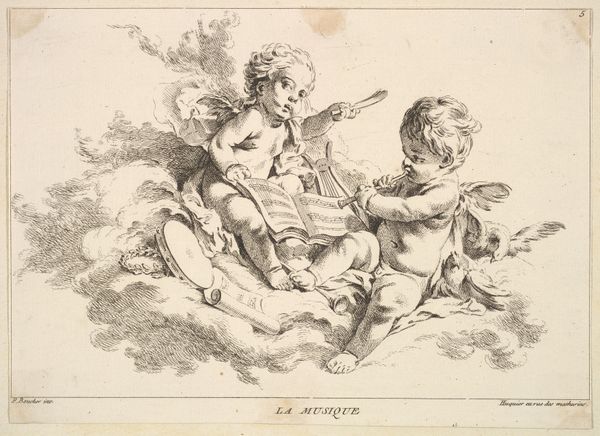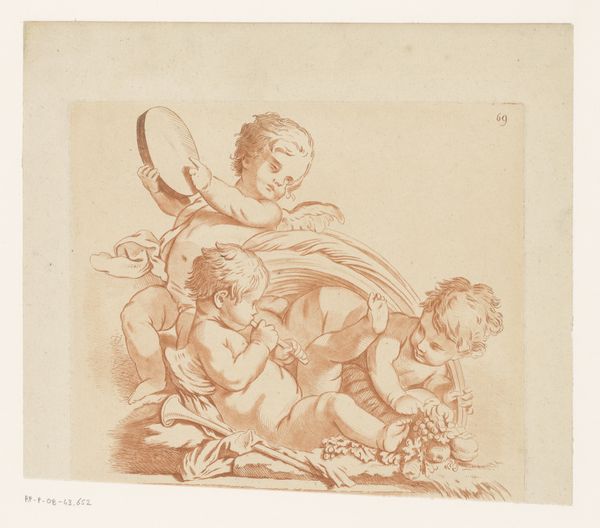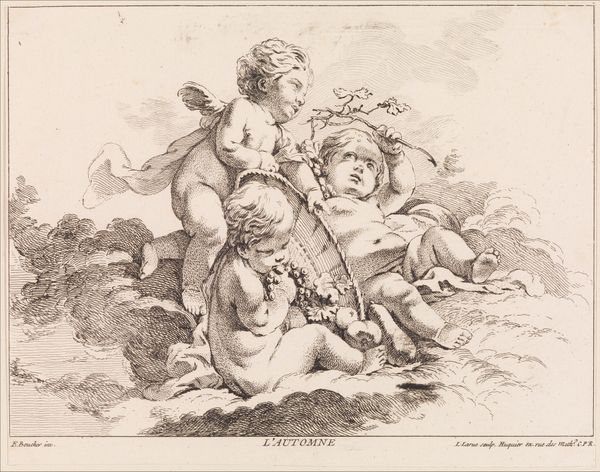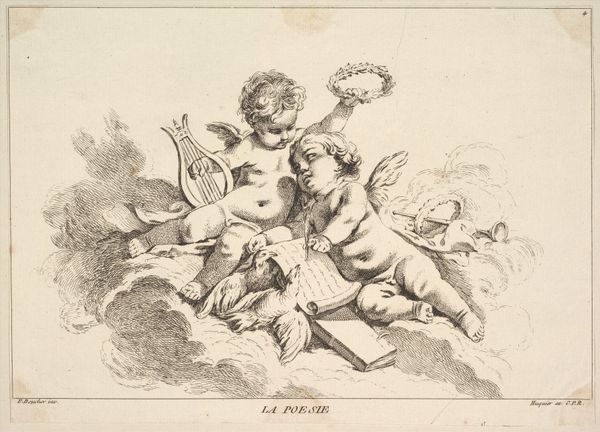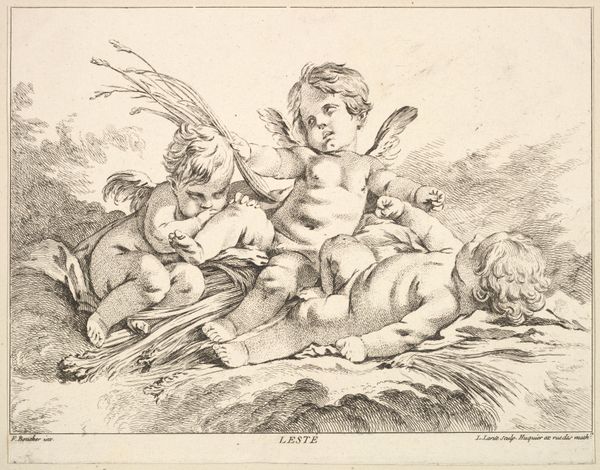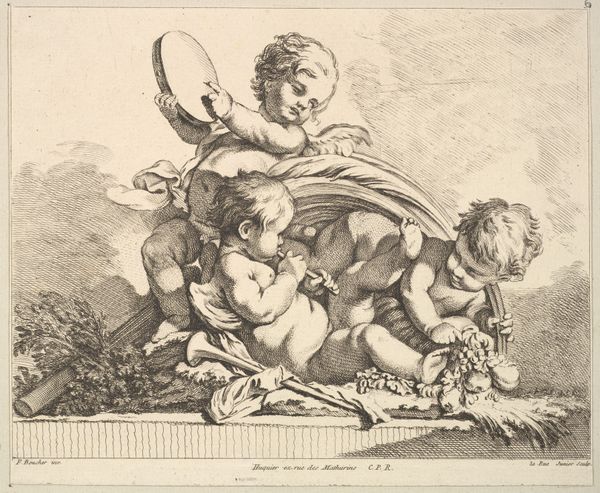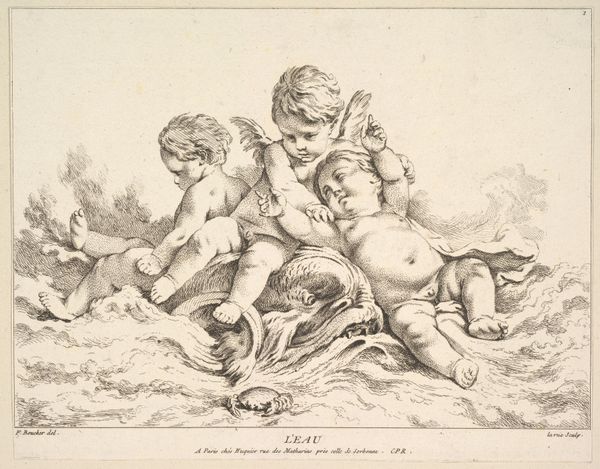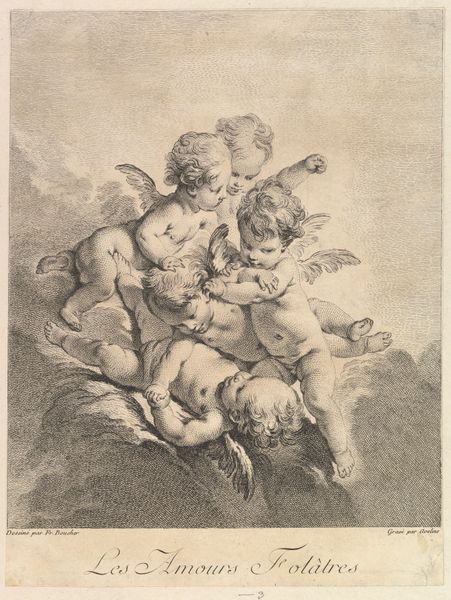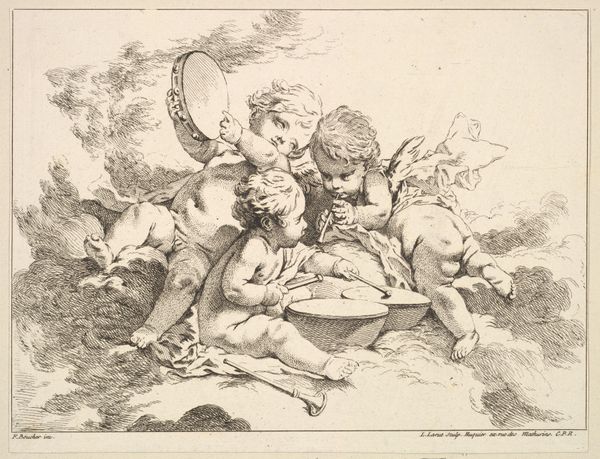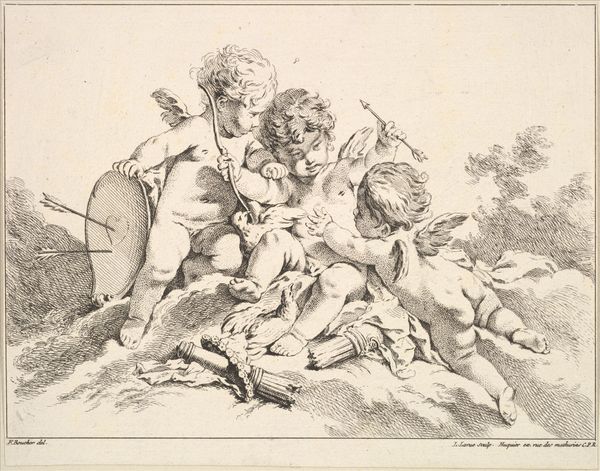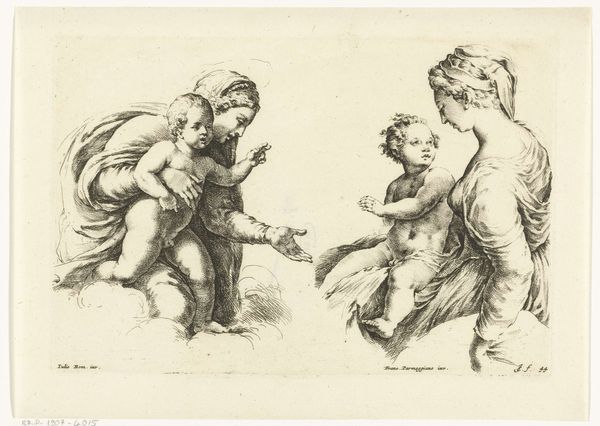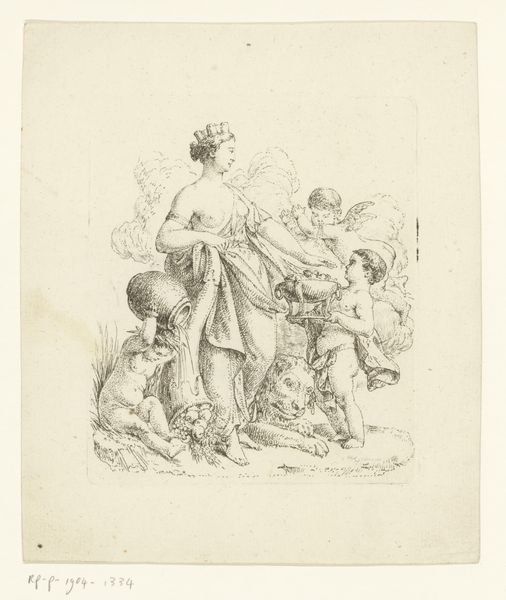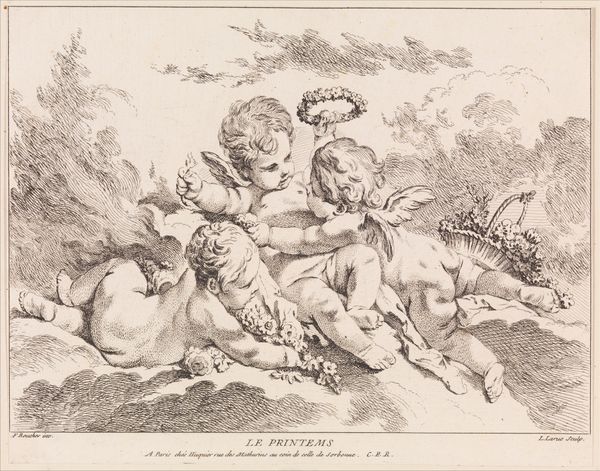
Dimensions: height 201 mm, width 298 mm
Copyright: Rijks Museum: Open Domain
Georg Leopold Hertel created this print, titled "Muziek", with etching around the 1760s or 70s in Germany. The image depicts two cherubic children, emblems of innocence and beauty, engaged in making music. One plays the flute, while the other conducts from a musical score, surrounded by instruments. In the 18th century, music wasn't just entertainment; it was deeply embedded in social life, from aristocratic salons to religious ceremonies. Hertel’s choice to represent music through cherubs taps into the cultural understanding of music as a divine harmony, a gift from the heavens. The print would have circulated among the educated middle class, reinforcing their appreciation for the arts and their social status. Art history reminds us that images are never neutral. By studying the visual codes, cultural references, and institutional contexts, we understand how artworks like this reflect and shape social values. Researchers can look at musical scores and iconographic handbooks from the period to better grasp how music was understood then.
Comments
No comments
Be the first to comment and join the conversation on the ultimate creative platform.
